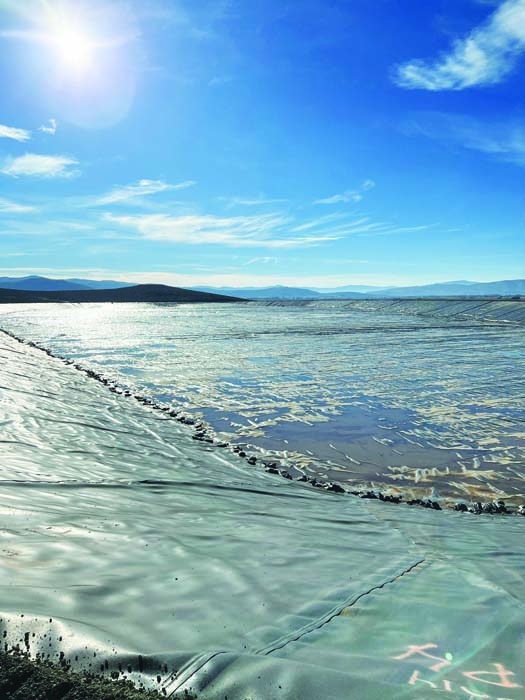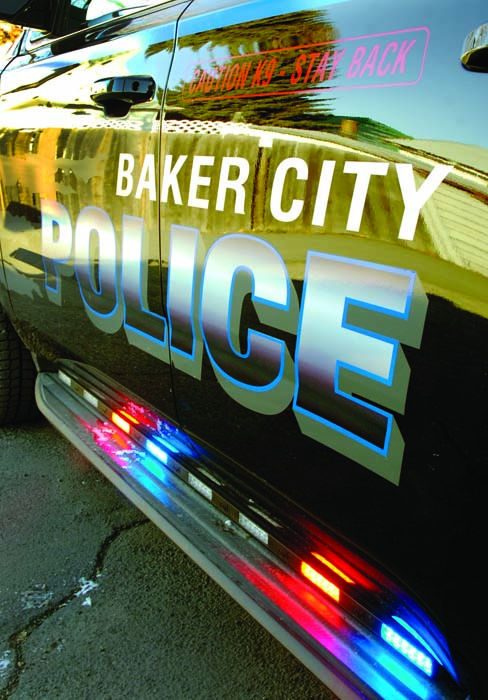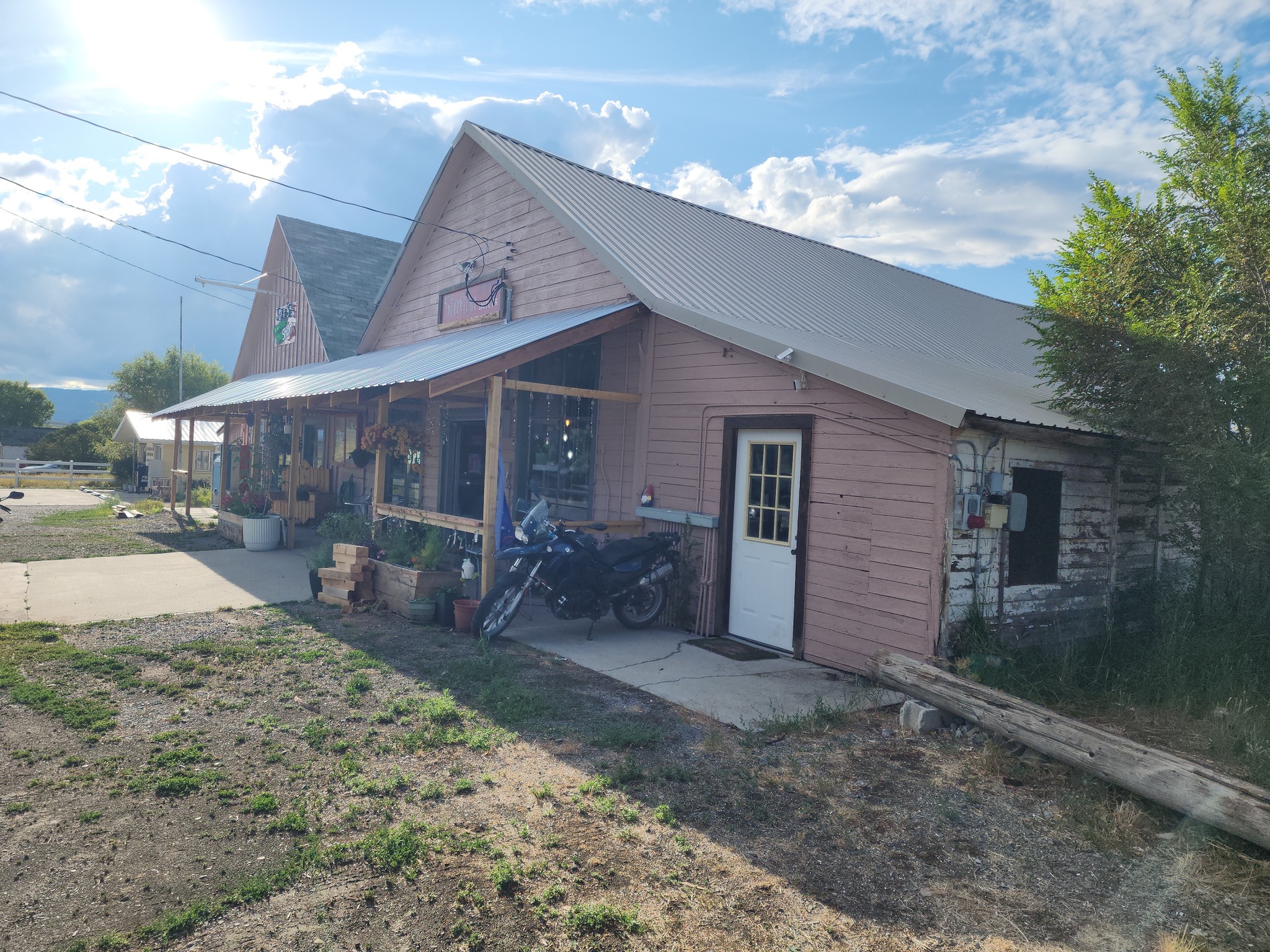Baker City amends lawsuit related to leaking sewer lagoon, now seeking $2.15 million
Published 10:00 am Tuesday, June 3, 2025

- A liner was installed in the fall of 2021 at Baker City's new wastewater storage lagoon east of the Baker City Airport and south of Highway 203. City officials detected leaks in the liner in 2022, and repairs made in the fall of 2023 weren't successful, according to public works director Joyce Bornstedt.
Baker City’s attorney has filed an amended civil lawsuit related to the city’s leak-prone sewer lagoon, adding two defendants and increasing the amount the city is seeking from $82,000 to more than $2 million.
Attorney Dan Van Thiel filed the amended suit May 29 in Baker County Circuit Court.
The city is asking for damages of $2,157,546.
Trending
The lagoon, on a 51-acre parcel the city bought in 2019 at the eastern edge of Baker Valley, was built to store wastewater.
It’s part of a $5.7 million project that also includes a pipeline connecting the lagoon to the city’s existing sewer ponds, about a mile north of town near Highway 30.
The city will be repaying a state grant for the work for the next nearly 30 years.
The lagoon was built in 2021. The high-density polyethylene liner installed in the lagoon leaked, and repairs made in 2023 apparently didn’t fix all the leaks, according to the lawsuit.
Joyce Bornstedt, the city’s public works director, said recently that the city won’t be able to use the lagoon until the liner is replaced.
The initial lawsuit that Van Thiel filed in early June 2024 had a single defendant — Anderson Perry and Associates, the La Grande engineering firm the city hired to design the wastewater project, including the lagoon.
Trending
The city asked for $81,996 from Anderson Perry, the amount that Gyllenberg Construction of Baker City, the city’s contractor on the project, requested the city pay for repairs the company made to the lagoon liner in 2023.
Gyllenberg Construction hired Northwest Linings and Geotextile Products Inc. of Kent, Washington, to install the liner, according to the city’s amended lawsuit.
The amended complaint retains Anderson Perry as a defendant and adds as a defendant Northwest Linings. The third defendant is Swiss RE Corporate Solutions America Insurance Corporation of Kansas City, Missouri, the company associated with the Gyllenberg Construction’s performance bond for the project. That bond was for $5,577,953, according to the lawsuit.
The lawsuit states that the city sent a notice of contractor default on March 26, 2025, to Gyllenberg Construction and Northwest Linings.
On May 23, 2025, the city sent a notice to the insurance company demanding that it “perform its obligations under the bond” provided by Gyllenberg Construction.
According to the city’s amended lawsuit, “Design flaws as well as liner installation and liner construction quality assurance and construction quality control errors have all contributed to failure of the liner system.”
The $2.15 million the city is seeking is for “additional design and construction costs” related to problems with the liner, according to the lawsuit.
A status check on the suit is scheduled for July 14 at 1:45 p.m. in Baker County Circuit Court.
Anderson Perry files separate complaint
The La Grande firm has filed a third-party complaint naming as defendants Gyllenberg Construction, Northwest Linings and AGRU/America Inc. of Georgetown, South Carolina, the company that made the liner.
Anderson Perry denies liability for the city’s claims.
“To the extent that plaintiff (Baker City) has suffered any alleged harm, third-party defendants are responsible for such alleged harm and liable to plaintiff for the allegations contained in plaintiff’s complaint,” Anderson Perry’s suit states.
The company is represented by attorneys Shiwanni Johnson and Grant Margeson of the firm Sokol, Larkin, Wagner & Storti LLC of Portland.
Anderson Perry’s attorneys, in addition to filing the third-party complaint, have filed an answer to the city’s amended lawsuit, asking a judge to dismiss the complaint with prejudice, meaning the city could not refile the suit.
Johnson declined to comment about the lawsuits on Tuesday, June 3.
Johnson filed a response to the city’s amended lawsuit on June 25. The document states that “the City’s damages, if any, were caused by the acts of others that were not controlled by (Anderson Perry).”
The Baker City Herald has left messages with Van Thiel, Gyllenberg Construction and Northwest Linings.
In a July 11 response to the Anderson Perry lawsuit, two attorneys representing Gyllenberg Construction denied that their client is liable for any of Anderson Perry’s damages. Gyllenberg Construction’s attorneys are asking a judge to dismiss the complaint with prejudice, meaning it couldn’t be filed again.
Lagoon’s purpose
The lagoon and pipeline, which comprise the most expensive wastewater project in the city in more than two decades, was prompted by the Oregon Department of Environmental Quality (DEQ) telling city officials more than a decade ago that eventually the agency would not allow the city to pipe treated wastewater into the Powder River.
That’s how the city has disposed of treated wastewater from its four older lagoons, which are near the river, for more than half a century.
DEQ told city officials that treated wastewater could promote algae blooms and otherwise pollute the river.
The new lagoon, which is 20 feet deep compared with the existing lagoons’ depth of 6 to 8 feet, also increases the city’s capacity to store wastewater, Bornstedt said. The pipeline allows the city to move wastewater between the new and old lagoons.
Rather than piping wastewater into the river, the city plans to use water from the new lagoon to irrigate nonfood crops on private land near the lagoon.
DEQ has denied the city’s application to use wastewater for irrigation on some of that land due to a shallow groundwater table and soils that don’t readily absorb water.
Since the leaks were detected in 2022 and the new lagoon drained to facilitate repairs — the water was pumped via the new pipeline to the old lagoons — the city has been storing wastewater in the old lagoons and continuing to release treated water into the river.
The city still has a permit from DEQ to do so.
On March 14 of this year, Baker City Manager Barry Murphy, along with Erin Saylor, interim manager for DEQ’s Office of Compliance and Enforcement, signed an agreement regarding the concentrations of certain pollutants in the treated wastewater the city releases into the Powder River near the lagoons north of town.
Those limits were set in a permit DEQ issued to the city in 2003. They include limits on pH level of the water, the amount of suspended solids in the water, and the “biochemical oxygen demand.”
The latter measures the oxygen used by aerobic bacteria that decompose organic matter in water. A higher level means more organic pollution in the water, which can result in lower oxygen levels in the water that are harmful to fish and other aquatic life.
Under the March 14 agreement, DEQ will not assess fines against the city if the treated water exceeds those limits but doesn’t exceed the higher interim limits included in the agreement.









